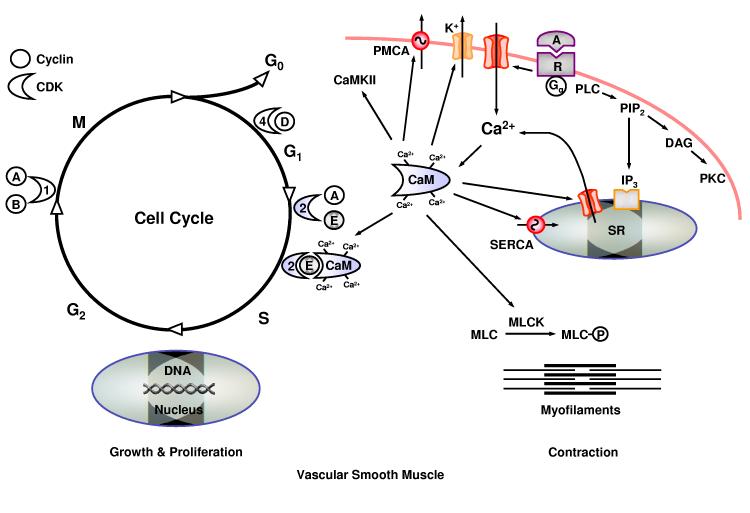Agonist (A)-receptor (R) interaction increases the hydrolysis of phosphatidylinositol 4,5- bisphosphate (PIP2) and IP3 production in VSM. IP3 stimulates Ca2+ release from the sarcoplasmic reticulum (SR). Also, extracellular Ca2+ enters VSMC through Ca2+ channels. Ca2+ binds calmodulin (CaM), which could activate myosin light chain (MLC) kinase and initiate contraction, or regulate the activity of K+ channels, Ca2+ release channels, Ca2+ pumps, and CaM kinase II. During vascular injury, VSMC transforms into undifferentiated phenotype and enters a cell cycle which consists of G1, growth and preparation of the chromosomes for replication; S, synthesis of DNA; G2, preparation for mitosis; and M, mitosis. Ca2+/CaM increases the activity of cyclin E/CDK2 and stimulates G1/S transition, and thereby promotes VSM growth and proliferation.

An official website of the United States government
Here's how you know
Official websites use .gov
A
.gov website belongs to an official
government organization in the United States.
Secure .gov websites use HTTPS
A lock (
) or https:// means you've safely
connected to the .gov website. Share sensitive
information only on official, secure websites.
